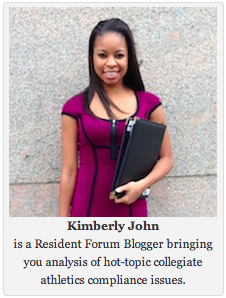The recruiting battle between NCAA collegiate hockey and the Canadian Hockey League (“CHL”) is forcing teenage hockey players to make a career decision early in high school: whether to compete on an NCAA collegiate hockey team, or to compete at the major junior level in the CHL, which would take away their NCAA hockey eligibility. Because collegiate hockey coaches and major junior teams are seeking talent from the same age bracket, NCAA Legislative Counsel is considering a proposal that would allow college coaches earlier, more frequent contact with players in an effort to stay competitive with major junior teams’ recruiting efforts.
The CHL consists of three Canadian-based member leagues with players between the ages of 16-20: the Ontario Hockey League, the Western Hockey League, and the Quebec Major Junior Hockey League. The CHL is considered the most direct path to a professional NHL contract, making it an attractive option for young players. According to Andrew Podnieks in an article for the New York Times, CHL players receive a minimum stipend per week from the league, and an education package that includes a percentage of tuition for each year the player active.
When the Canadian Hockey Association classifies Canadian and American ice hockey teams as major junior teams, the NCAA labels them professional teams. When a recruit chooses to compete in the CHL, he is no longer considered an amateur under NCAA rules, and his eligibility for collegiate ice hockey is lost.
A recruit’s collegiate ice hockey eligibility is put at risk even in a major junior team try-out situation. Since many CHL players have signed professional contracts with NHL teams, playing an exhibition game or scrimmage against another CHL team as part of a try-out for another CHL team results in a loss of eligibility because the recruit participated in competition against professional athletes.
The NCAA has strict rules that regulate recruiters’ contact with players. Pursuant to the NCAA Division I manual, a Division I college hockey coach cannot contact a recruit until June 15 of the end of the recruit’s sophomore year in high school. The CHL, alternatively, does not have these recruiting limitations, so NCAA coaches have less time to convince players to join their college teams. By a player’s sophomore year, major junior league teams have already aggressively recruited notable players, so college hockey may not be a consideration for these players.
The battle to recruit young talent has placed pressure on the NCAA to allow coaches to relax Division I collegiate hockey recruiting rules. Proposal 2013-25-B intends to allow unlimited calls to a recruit at the discretion of the college starting January 1 of the individual’s sophomore year. The proposal would also allow for off-campus contact recruiting opportunities after June 15 of the end of individual’s sophomore year, which is a change from the current rule that only allows for off-campus contact during the recruit’s senior year. Under the proposed new rules, college coaches would also be allowed to give recruiting materials to players after January 1 of their sophomore year. Additionally, electronic correspondence, such as emails, instant messages, and texts, would be deregulated as long as they are kept private between the sender and the recipient.
Ultimately, the new recruiting rules would allow for NCAA hockey coaches and major junior teams to meet on a more level field as they vie for young recruits. Consequently, Canadian hockey players would be empowered to make more informed choices about their futures.
Posted Jan. 21, 2014
